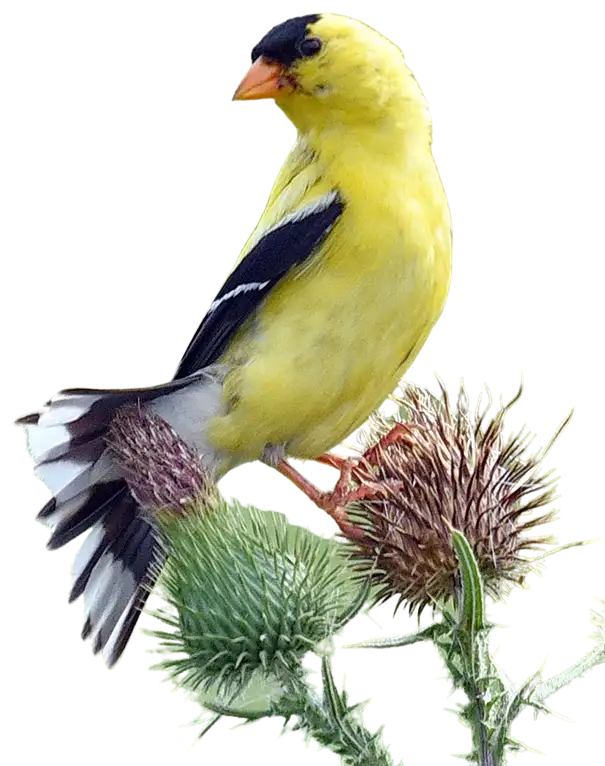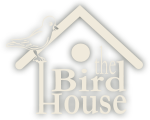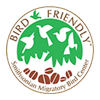Birding 101 – Tips for Beginning Birders
If you have ever looked out your window and wondered what the bird in your yard is, you already have the first ingredient necessary to become a birder….curiosity! To go to the next step you don’t need much – more of that curiosity, a field guide, perhaps a pair of binoculars, and you are on your way.
If you want a really quick intro, check out Liz Goodfellow’s Six Tips.
If you want more detail, read on to learn how to get started in one of the only hobbies you can do anywhere, anytime!
1. Start small.
When you start out birding you may need to spend time becoming acquainted with even our most commonplace species, to become familiar with some of the best birding places in the area, or to understand what birds you might expect to see at different times of the year. In your first trips into the field, you should not try to see every bird you encounter, but to concentrate on seeing most birds you see WELL, to learn how to identify birds, by size, shape, habitat or behavior as well as by color and markings.
2. Find the best spots.
You’ll do best in birding if you think like a bird—where will I get the food I like and in the environment I am used to? So, understand the importance of habitat in identifying the birds you find. Each bird has its preferred habitat for feeding and breeding—woods, fields, wetlands, lakes, ponds; treetop, shrubbery, ground; etc.—and is seldom found far from it. Learn what birds you are likely to see in the habitat you’re visiting and what habitats the birds you are looking for prefer. If you see something that ordinarily shouldn’t be there, question it and see if it isn’t something more likely—you won’t find a Swamp Sparrow in a typical backyard or a woodpecker where there are no trees nearby.
And don’t ignore what time of year it is. Different birds are present in the same habitats at different times of the year. For example, in the late fall through early spring, the lakeshore gets most of the attention—Irondequoit Bay, the mouth of the Genesee, RG&E’s Russell Station in Greece, Braddock Bay, Hamlin Beach. Those are places where you’ll find waterfowl in the winter, particularly when there’s open water there and ice elsewhere. Learning to identify ducks on the water is actually a great way to get started birding, as they are often in your unobstructed field of view for longer than a moment.
Through the spring, and particularly when there is a southwest wind, the Braddock Bay HawkWatch—or any place along the lakeshore—is a good place to see migrating hawks, eagles and vultures. While hawk watching can be frustrating for a beginner (because everything looks like a dot in the sky), the folks at the HawkWatch are very helpful as they’ll explain what you’re seeing and often offer you looks through their scopes.
Other times of year may suggest other prime birding spots.
3. Go slow and record your observations.
Take your time, examine the birds you see in as much detail as you can, listen for their calls or songs as you watch, pay attention to where you see them (tree, bush, grass, deep or shallow water, etc.) and to what they’re doing while you’re watching. Keep notes, make a sketch, record your observations.
Most birders keep a life list and many keep annual lists, trip lists or locale lists. You can download an RBA checklist to get you started. You can also use a free web-based program called eBird to store all your sightings. The more you look, the more you see!
4. Be comfortable and dress appropriately for the weather and terrain
…when you go birding—you won’t enjoy yourself if you’re cold or wet or your feet hurt or you’re being eaten alive by bugs. If it’s cold—and it can be cold and windy even in spring—dress in layers with something reasonably windproof as the outermost layer. Some of the best birding happens when it rains, so pack a rain jacket or poncho if needed (or carry a small, collapsible umbrella, just in case). If it’s buggy when it’s warm you might consider long sleeves and long pants to keep them off—and use insect repellent containing DEET. Wear comfortable, sturdy shoes or boots if you have them, sneakers are only OK for easy terrain in reasonably good weather. Avoid wearing white when birding as that’s a good way to drive off the birds; also avoid bright colors (especially red or orange) unless you enjoy being attacked by territorial hummingbirds. Earth tones are the thing you should use in birding clothes.
5. Identification Aids.
Next, a good field guide can satisfy your curiosity about what you’re looking at. Digital field guides can be had for iPhones, iPods, iPads and Androids and they even include bird songs, but a hard copy guide never runs out of batteries! Many birders use both. Good ones for beginners are: The Sibley Field Guide to Birds of Eastern North America by David Sibley; Focus Guide to Birds of North America by Kenn Kaufmann; National Geographic Field Guide to the Birds of North America. All of these cost less than $25 and fit in your pocket. They all have lots of features to help you identify the birds you see. The Merlin Bird App is popular for its ability to identify birds from a photo, but resist the temptation to use it as a short-cut. Always work to identify the bird on your own so that you can eventually wean yourself from the guides!
One additional tip on how to use a guide – don’t use it until you’ve examined the bird you’re looking at in detail, noting its overall shape and size, location in its environment, and it’s key “field marks” (color of the various parts of the bird, markings, bill shape, leg color, etc.). Start at the bill and quickly move around the bird—head, neck, back, wings and tail, underside, legs, breast—noting as much detail as you can. Try to note at least three features before you tear your eyes away. Many serious students of birding make a quick sketch to lock in key features. Then, remembering as much of that as you can, check out the field guide.
6. Optical Equipment.
Although you can bird perfectly well from your backyard using nothing but your naked eyes, most birders will want some basic birding equipment. Most important— splurge on as good a pair of binoculars as your budget will stand, and do some research to find the best brand in your price range. Poor binoculars will just frustrate you—the image of the bird is not likely to be sharp and clear and you may not be able to see the colors and markings of the birds well enough to identify them, especially in poor light. You should look for binoculars that are “7 x 35” or “8 x 40” (the first number represents the magnification power and the second is the the diameter of the front lens of the binocular in millimeters), so you’ll be able to see birds well in poor as well as good light. Try to get as wide a “field of vision” as you can (between 300 and 450 feet at 1,000 yards distance), so you’ll be able to spot birds more quickly. Other things you might consider are weight, water-resistance, special lens coatings—the list goes on and on.
You could spend almost $2,000 here, but you don’t need to. Excellent, serviceable binoculars can be had for about $200 to $350, or even a bit less if you shop carefully. If you have access to the Internet, you can find lots of good information on binoculars or a review on binoculars here.
Many experienced birders use a spotting scope to bring even more distant birds into view, but this can wait until you’ve got some birding experience under your belt. Birders love to share, so someone will usually offer to give you a look through their scope. Try several, ask a lot of questions, and figure out what features you like before you make a big purchase.
A digital camera is a great way to capture a picture of a bird you can’t identify in the field. The camera on your phone can often take good-enough photos, and you can even put it up to your binoculars to get a closer view!
7. Digital Tools
… include Bird ID apps for the phone, apps for recording your sightings, and dozens of internet and social media sites that focus on birds. Check out the websites of birding organizations such as the American Birding Association or Cornell Lab of Ornithology. They’re good sources of information about birds and birding, they have various activities that you might like to take part in, and their websites have links to a lot of other resources that will make your birding more enjoyable.
Subscribing to listservs such as GeneseeBirds will help you know where birds are being found and reported on in our region. A search for local facebook pages will focused on birds will likely turn up many results. Increasingly, birders check eBird, run by the Cornell Lab of Ornithology. On this site you can even choose a bird you would like to find and eBird will tell you where in the country, or even the world it has been seen within specific time periods. This is amazing technology that we encourage all birders to use.
8. Best Time to Bird.
The best time to see songbirds is in the morning, especially during the spring and fall when birds are migrating. Spend time looking at trees that are in the sun; that’s where birds are finding their breakfast. Ducks and geese are active all day long, and are easy to find on local ponds and lakes in any season—even winter. Keep an eye on the sky for raptors during daylight hours, and on muddy shorelines for wading birds from sunrise to sunset.
9. Learn from birders who went before you.
Rochester has a long history of birdwatching, and there are dozens of local birders who are happy to help you find and identify birds.
Don’t be afraid to sample the RBA field trips, and ask questions along the way. The trips will introduce you to places you may want to visit again and again on your own, they will give you a chance to try different spotting scopes, and you will learn more about identifying birds by sight and sound.
The RBA even offers several trips specifically for beginning birders which are fun and informative. On these beginner trips, we visit the premier birding spots in the area at their peak seasons. There is no preset agenda to cover, no quota of species or rarities to meet. Our experienced leaders discuss the basics of birding and they assume that most of the birds encountered will be new to you, or at least worth examining in some detail. We take our time and try to make sure everyone gets to see the birds as well as possible. Questions are encouraged and leaders try to avoid technical jargon (or to explain what they mean if that’s unavoidable).
10. Have Fun!
Identifying birds and learning more about them is satisfying, but the main reason birders bird is that it’s fun! The most important beginning birding tip we can give you is first and foremost…Enjoy yourself!
Finally, we hope you’ll consider joining an organization like the Rochester Birding Association that supports new birders by providing resources and trips to help them learn and grow. Learning how to look and “see” is a big part of becoming a birder. Join our club so we can help you! Click below!
Click here for a printable brochure with our 10 Tips for Beginning Birders.



